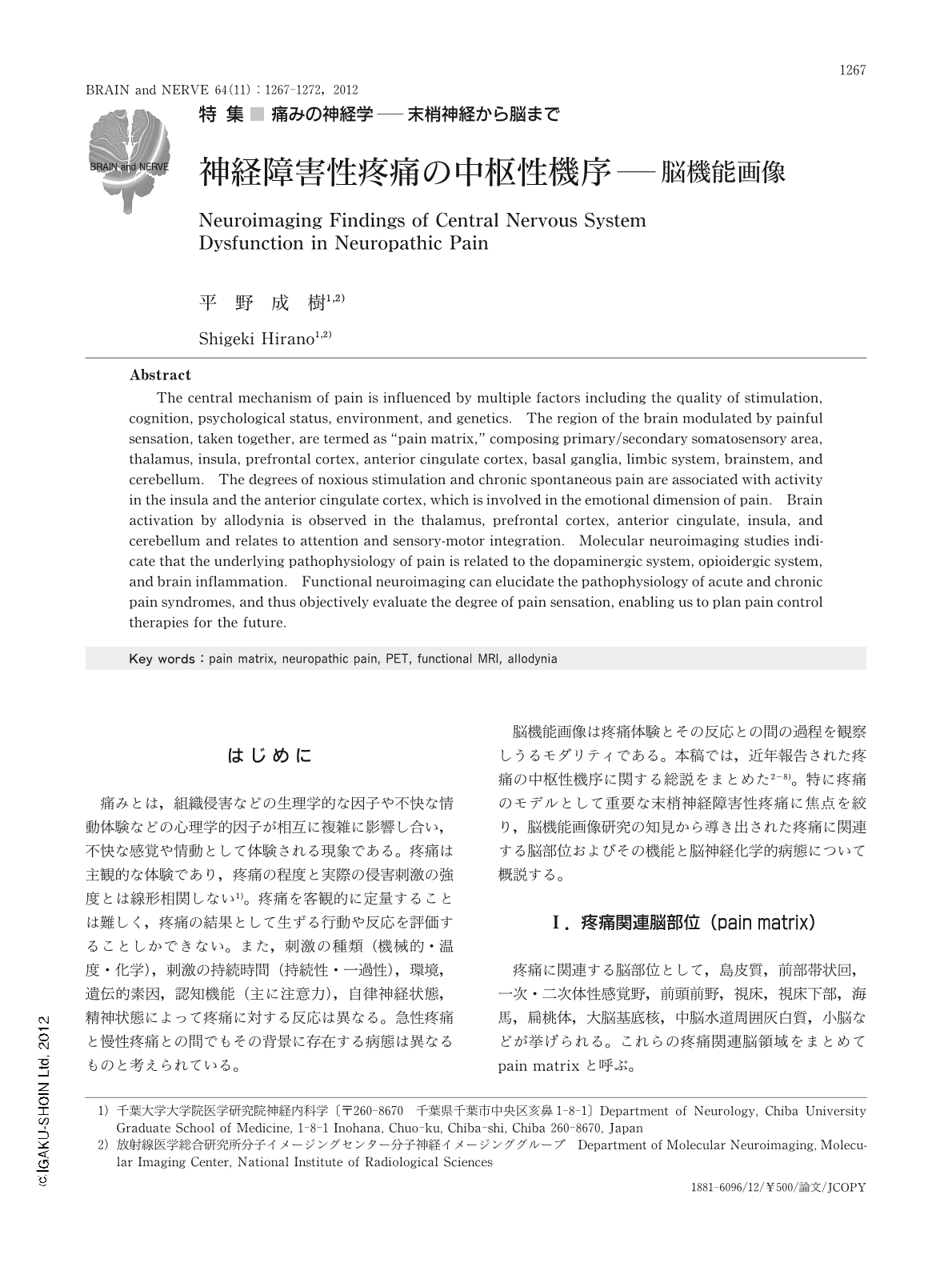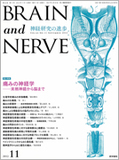Japanese
English
- 有料閲覧
- Abstract 文献概要
- 1ページ目 Look Inside
- 参考文献 Reference
はじめに
痛みとは,組織侵害などの生理学的な因子や不快な情動体験などの心理学的因子が相互に複雑に影響し合い,不快な感覚や情動として体験される現象である。疼痛は主観的な体験であり,疼痛の程度と実際の侵害刺激の強度とは線形相関しない1)。疼痛を客観的に定量することは難しく,疼痛の結果として生ずる行動や反応を評価することしかできない。また,刺激の種類(機械的・温度・化学),刺激の持続時間(持続性・一過性),環境,遺伝的素因,認知機能(主に注意力),自律神経状態,精神状態によって疼痛に対する反応は異なる。急性疼痛と慢性疼痛との間でもその背景に存在する病態は異なるものと考えられている。
脳機能画像は疼痛体験とその反応との間の過程を観察しうるモダリティである。本稿では,近年報告された疼痛の中枢性機序に関する総説をまとめた2-8)。特に疼痛のモデルとして重要な末梢神経障害性疼痛に焦点を絞り,脳機能画像研究の知見から導き出された疼痛に関連する脳部位およびその機能と脳神経化学的病態について概説する。
Abstract
The central mechanism of pain is influenced by multiple factors including the quality of stimulation, cognition, psychological status, environment, and genetics. The region of the brain modulated by painful sensation, taken together, are termed as "pain matrix," composing primary/secondary somatosensory area, thalamus, insula, prefrontal cortex, anterior cingulate cortex, basal ganglia, limbic system, brainstem, and cerebellum. The degrees of noxious stimulation and chronic spontaneous pain are associated with activity in the insula and the anterior cingulate cortex, which is involved in the emotional dimension of pain. Brain activation by allodynia is observed in the thalamus, prefrontal cortex, anterior cingulate, insula, and cerebellum and relates to attention and sensory-motor integration. Molecular neuroimaging studies indicate that the underlying pathophysiology of pain is related to the dopaminergic system, opioidergic system, and brain inflammation. Functional neuroimaging can elucidate the pathophysiology of acute and chronic pain syndromes, and thus objectively evaluate the degree of pain sensation, enabling us to plan pain control therapies for the future.

Copyright © 2012, Igaku-Shoin Ltd. All rights reserved.


